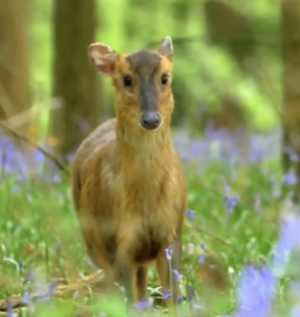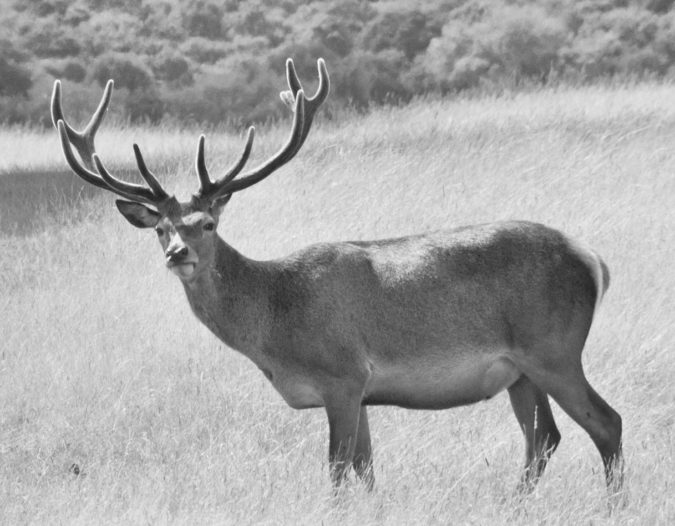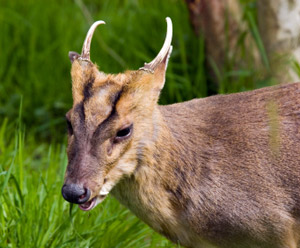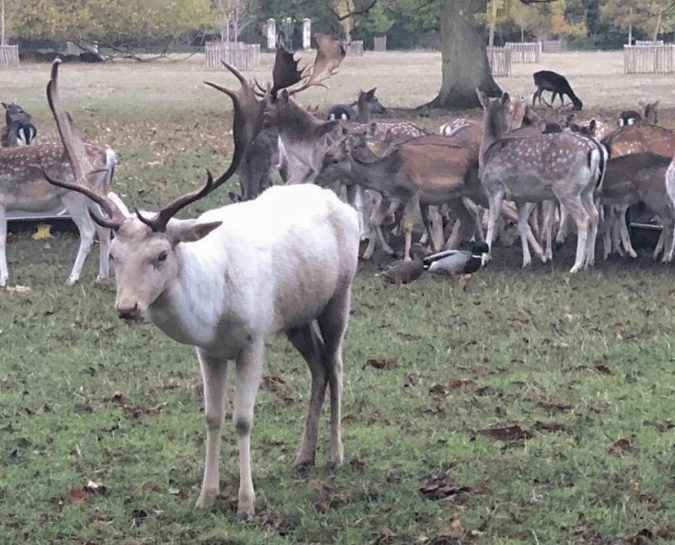Deer control – shoot to kill and cull, or are there other solutions?

Deer are eating out the bottom of our woodlands and wildlife is suffering. Although the size of the national deer population is not known for sure it is probably at its highest for a thousand years. There may be as many as two million deer in the UK’s countryside. There are several types, such as the two native species, being the Red deer (Cervus elaphus) and the Roe deer (Capreolus capreolus) - which is the most populous of the larger deer being, perhaps, 500,000 animals. Then there are the ones the Normans introduced, the Fallow deer (Dama dama) with a population of at least 150,000. On top of that there are three species of deer which have been introduced from the Far East including the Sika deer (Cervus nippon). The other two from China are very different - there are relatively small numbers of the Chinese Water deer (Hydropotes inermis), whereas there are probably hundreds of thousands of the small and mostly nocturnal Muntjac (Muntiacus reevesi). They are all hungry and they all love woodlands.
Most people believe the deer population needs to be controlled, or even reduced in number, but the range of species makes that harder to do. If you reduce the population of one type of deer the others will expand their numbers. Culling, or shooting, is certainly helping but stalkers are usually only interested in the larger species with enough meat to make it worthwhile and this leaves the muntjac space to thrive. Here is a film we made of a Scottish deer stalker explaining her job and how her stalking helps with environmental management:
Megan: “99% of stalking is looking through the binoculars.”
Other ways of controlling the deer population are fencing them out but that is expensive and unlikely to work in the large open areas of the British countryside such as the moors and the uplands. Another potential method of control is introducing predators such as lynx or other larger hunting species. This meets some resistance from the public and the unintended consequences are that the predators might well go after different species altogether and occasionally humans.

Most work is going on with contraceptive solutions so that the birth rate is reduced and less killing or culling is needed. This is also being researched for controlling populations of wild boars and grey squirrels to keep their numbers in check. It means getting the drugs to the target species and usually to the females which is often done through their foodstuffs, using food hoppers which are designed to be only accessible to that species. Other approaches include sterilization through injections and the Deer Initiative partnership has done a lot of work on examining different methods of biological control of deer numbers: https://www.thedeerinitiative.co.uk/pdf/contraception-and-wild-deer-control.pdf
It’s not easy. Even if one of these methods works, it will require an enormous effort to cut deer populations particularly of the smaller and more evasive species such as the muntjac.

What do you think should be done?
Meanwhile , deer are dangerous to motor cars. The British Deer society estimates that annually there are between 40,000 and 70,000 accidents involving deer and this leads to about 700 human injuries, and far more deer fatalities!.
So, in short, an overpopulation of deer is a large and growing problem: they damage the flora in woodlands, they eat young saplings, they compete with other mammals for space, they eat farmers’ crops, they carry ticks and they cause road accidents. The challenge of controlling the deer population is very real.

Comments are closed for this post.
Discussion
I am dismayed by some of the comments above. We are converting some arable land into community nature sites. Roe deer are causing colossal damage to newly planted trees.
We are now putting every tree in 1.2 metres tall tree guards. We are even considering this for hedging. Members of the community planted hedging in 60cm tall tubes, but as soon as the foliage reaches the top of the tubes the deer are browsing on the new growth and preventing the hedging becoming established.
We are at a loss what to do. When we eventually remove the guards, the deer will strip the bark, and kill trees this way. We do not begrudge the deer nibbling our trees, even killing a few, but cannot sustain the current levels of destruction.
Quite simply, there are far too many deer. Perhaps “they were here before we were”, but so were beers, wolves and lynx, which would once have kept deer numbers to natural levels, levels which allowed woodlands to flourish, the ground flora and understory to thrive. If we do not want to share our countryside with predators which prey on deer, then we have no option but to become the predators ourselves, and reduce their numbers to natural levels.
The other solution is to do what we did to the predators and hunt deer to extinction. If this were to happen, we could stop planting woodlands and watch natural regeneration do the job for us. Think of the plastic which could be saved if tree guards became unnecessary. I love nature, but it is impossible to argue that the current deer population is beneficial for the environment. Grey squirrels are bad enough, unnaturally high deer numbers is a thousand times worse. If it is true that people get pleasure from shooting deer, so be it, someone would have to take on the role, and the more enthusiastic they are, the better.
If we care for the natural world, we must make hard decisions, and look at the big picture, and not allow misguided sentiment to further destroy what precious little natural environment remains. Don’t misunderstand me, it would be abhorrent to eradicate deer entirely from our countryside, but doing nothing is arguably even worse.
I suspect shooting deer is a bit like fox- hunting. More a sport than a population solution. Fox- hunters have been known to create fox habitats making sure there were enough to kill for fun. I find tree guards protect tree saplings. Only trees are nature enough deers basically leave them alone.
They were here before us. Land should given to them to roam, and then can be controlled and sterilised if out of hand.
It should not be a sport or enjoyment out of killing these animals. Move the healthy to rural areas in the UK.
Muntjac are actually a popular quarry and extremely good to eat.
Any one needing deer management can ask the St Hubert Club which has been managing woodland deer since the 1950’s when it also instigated the Country’s first training program in deer management.
Grow a plant they don’t like around deteremt area ie chilli vine deters hippos what deters deer
I don’t agree with the killing of any creature for, so called, sport. I feel sorry for those who feel killing another living creature for, enjoyment, and this should not be done on Woodlands land, certainly not with my support. I will now remove myself from your listings.
The deer shooting industry is big money. Arguments for controlling deer by shooting/stalking are simply a way to justify killing for fun. If we want to manage a species, we need to remove the so called ‘sport‘. If people were not making money out of deer, I’m sure that numbers would drastically reduce.
I’ve seen estates in the Highlands providing hay for the deer in winter! The stalkers argue that they remove the weak, sick and old. Well, if you’re trying to reduce numbers, you should be removing the healthy deer. That’s obvious.
In summary, remove the motivation to keep numbers healthy and see what happens!
Could they not be rounded up and given an area of their own to roam in?
Like Dartmoor for instance – they would be easier to control and sterilise….

The amount of ill informed comments on here is staggering and most of the comments were answered by Megan in the film.
Without good deer management, it has a negative impact on flora and fauna. We, as humans, removed the major controlling factor being in the form of apex predators, so we need to take on that roll as wolves will never be released to roam again.
People thinking that stalking is all about money couldn’t be further from the truth, yes money is made from it but that money goes back into the rural economy, further management, habit creation and a plethora of other things.
PS : woodlands a few mistakes, we only have 6 species for example not several
Ben Scarcliffe
30 September, 2023